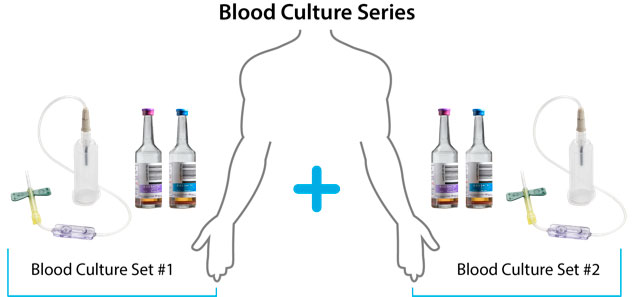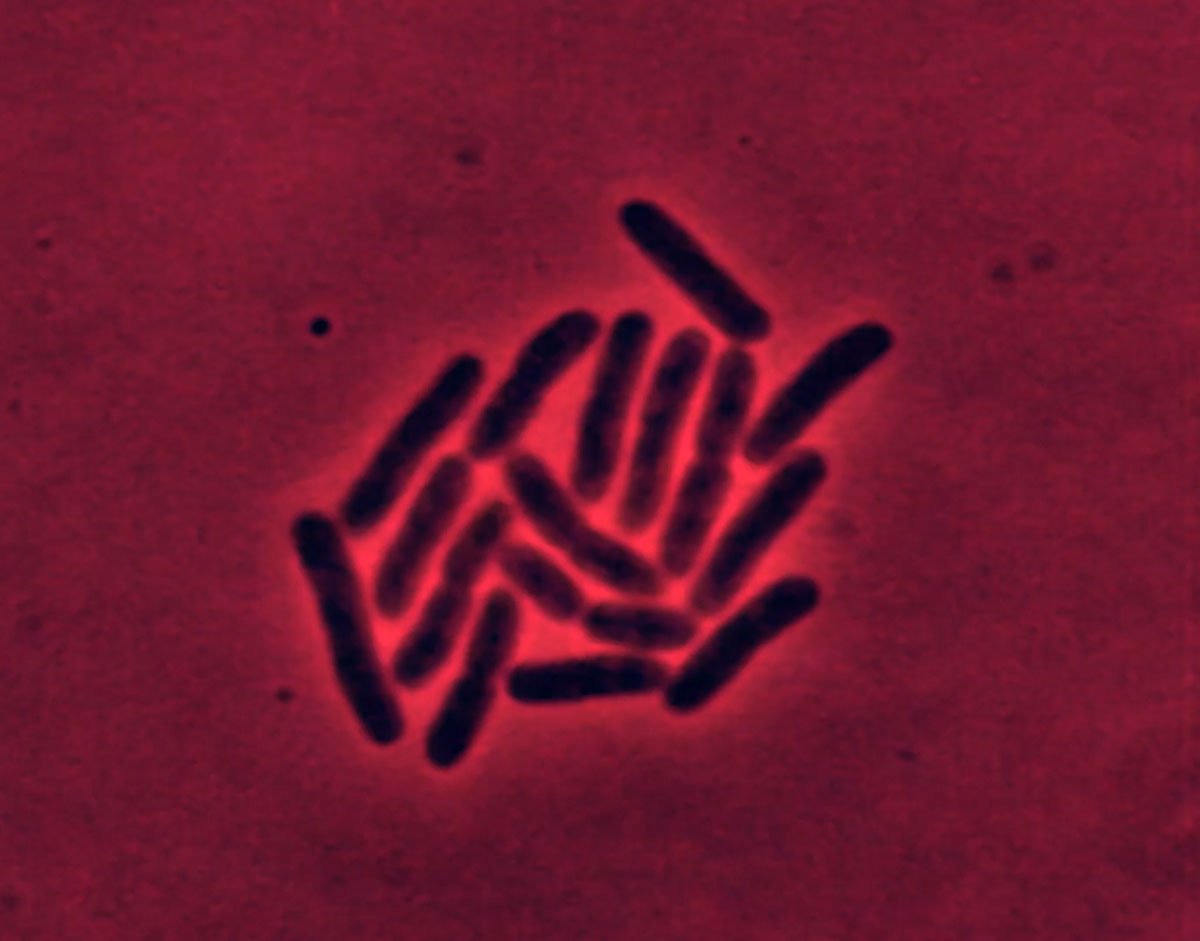Moeller D. Eliminating Blood Culture False Positives: Harnessing the Power of Nursing Shared Governance. J Emerg Nurs. 2017 Mar;43(2):126-132.
Advocate Health, Illinois
- A new process decreased the blood culture contamination rate from a baseline rate of 5.37% to 1.76%.
- The chief recommendation is to engage staff through clinical leadership.
Full text is not available without subscription.
Bowen CM, Coleman T, Cunningham D. Reducing Blood Culture Contaminations in the Emergency Department: It Takes a Team. J Emerg Nurs. 2016 Jul;42(4):306-11.
Kennedy Health, Cherry Hill, NJ.
- The plan targeted environmental and skin contaminates, teamwork, education, and feedback.
- During the 8-week pilot, the monthly contamination rates were 1.96% and 0.3%, respectively. Subsequent data over 1 year revealed the contamination rates ranged from 0.2% to 1.51%, with a mean of 0.87%.
Full text is not available without subscription.
Sinnott PL, Breckenridge JS, Helgerson P, Asch S. Using lean management to reduce blood culture contamination. Jt Comm J Qual Patient Saf. 2015 Jan;41(1):26-2.
Palo Alto Health Care System, Menlo Park, California, USA
- Reduce the blood culture contamination rate using Lean management quality improvement methods, including a rapid process improvement workshop to identify root causes of variation in blood culture procedures and countermeasures (potential improvement strategies) to address each problem.
- The blood culture contamination rate decreased significantly from 4.2% in the 19-month baseline period to 2.8% in the last 12 months of follow-up.
- An estimated 261 contaminated blood culture were avoided in the follow-up period.
Full text is not available without subscription.
Self WH, Talbot TR, Paul BR, Collins SP, Ward MJ. Cost analysis of strategies to reduce blood culture contamination in the emergency department: sterile collection kits and phlebotomy teams. Infect Control Hosp Epidemiol. 2014 Aug;35(8):1021-8.
Vanderbilt University School of Medicine, Nashville, TN
- Compared hospital costs associated with three collection strategies: usual care, sterile kits, and phlebotomy teams.
- Baseline contamination rates associated with usual care, sterile kits, and phlebotomy teams were 4.34%, 1.68%, and 1.10%, respectively.
- Compared to usual care, annual net savings using the sterile kit and phlebotomy team strategies were $483,219 and $288,980, respectively.
Self WH, Mickanin J, Grijalva CG, Grant FH, Henderson MC, Corley G, Blaschke Ii DG, McNaughton CD, Barrett TW, Talbot TR, Paul BR. Reducing blood culture contamination in community hospital emergency departments: a multicenter evaluation of a quality improvement intervention. Acad Emerg Med. 2014 Mar;21(3):274-82.
Vanderbilt University School of Medicine, Nashville, TN.
- Measured the effect of implementing a sterile blood culture collection process.
- At Hospital A, during the baseline period, 165 of 3,417 (4.83%) cultures were contaminated as compared to 142 of 5,238 (2.71%) during the intervention period. At Hospital B, during the baseline, 63 of 2,509 (2.51%) cultures were contaminated. But with the full sterile process, 51 of 1,865 (2.73%) cultures were contaminated.
- Hospital B experienced poor adherence. So, a simplified sterile process used during intervention period 2 was associated with a significant reduction in contamination, with 17 of 1,860 (0.91%) cultures contaminated.
- Monitoring the implementation process was important to identify and overcome operational challenges.
Marini MA, Truog AW. Reducing false-positive peripheral blood cultures in a pediatric emergency department. J Emerg Nurs. 2013 Sep;39(5):440-6.
Children’s Hospital Boston, Boston, MA, USA.
- Reduced the rate of false-positive peripheral blood cultures using blood culture kits, a dedicated team obtaining peripheral blood cultures, and following up with staff who draw a contaminated peripheral blood cultures.
- The rate of false-positive peripheral blood cultures decreased from the baseline rate of 2.1%. to 1.4%.
Full text is not available without subscription.
Weddle G, Jackson MA, Selvarangan R. Reducing blood culture contamination in a pediatric emergency department.Pediatr Emerg Care. 2011 Mar;27(3):179-81.
Children’s Mercy Hospitals and Clinics, Kansas City, MO
- Reduced the rate of false-positive peripheral blood cultures by educating staff about hospital policy, using a blood culture-drawing kit, having a dedicated team obtaining peripheral blood cultures, and following up with staff who draw a contaminated peripheral blood culture.
- The false-positive peripheral blood culture rate in the emergency department dropped from 2.1% to 1.4%.
- Before intervention, 44 patients were called back to the emergency department, and 25 were admitted because of blood culture contamination. After intervention, a total of 9 patients were called back, and 5 were admitted.
Full text is not available without subscription.
Harding AD, Bollinger S. Reducing blood culture contamination rates in the emergency department. J Emerg Nurs. 2013 Jan; 39(1): e1-6.
Southcoast Hospitals Group, New Bedford, MA, USA
- Developed and implemented a corrective action plan to lower contamination rates including: private conversations with staff members associated with higher numbers of contaminated draws, ensuring availability of necessary blood culture collection supplies, re-education of all staff surrounding blood culture collection best practices, monthly feedback on blood culture contamination rates, and continuing private conversations as necessary.
- The average rate of blood culture contamination dropped from 1.82% to 1.01% after the interventions, a 44% decrease in hospital-wide blood culture contamination rates.
- Annualized cost avoidance of approximately $614,000.
Boyce JM, Nadeau J, Dumigan D, Miller D, Dubowsky C, Reilly L, Hannon CV. Obtaining blood cultures by venipuncture versus from central lines: impact on blood culture contamination rates and potential effect on central line-associated bloodstream infection reporting. Infect Control Hosp Epidemiol. 2013 Oct;34(10):1042-7.
Yale-New Haven Hospital, New Haven, Connecticut
- Evaluated the impact of a new blood culture policy that discouraged drawing blood samples from central lines.
- The proportion of blood samples obtained for culture from central lines decreased from 10.9% to 0.4%.
- The proportion of blood cultures that were contaminated decreased from 84 (1.6%) of 5,274 to 21 (0.5%) of 4,245.
- Based on estimated excess hospital costs of $3,000 per contaminated blood culture, the reduction in CBCs yielded an estimated annualized savings of $378,000 in 2012 when compared to 2010.
- In mid-2010, 3 (30%) of 10 reported CLABSIs were suspected contamination compared with none of 6 CLABSIs reported from mid-November 2010 through June 2012.
Full text is not available without subscription.
Snyder SR, Favoretto AM, Baetz RA, Derzon JH, Madison BM, Mass D, Shaw CS, Layfield CD, Christenson RH, Liebow EB. Effectiveness of practices to reduce blood culture contamination: A Laboratory Medicine Best Practices systematic review and meta-analysis. Clin Biochem. 2012 Sep;45(13-14):999-1011.
Battelle Centers for Public Health Research and Evaluation, Associated Laboratory Consultants, Centers for Disease Control and Prevention, University of Maryland, United States
- Review the effectiveness of three practices for reducing blood culture contamination rates: venipuncture, phlebotomy teams, and prepackaged preparation/collection (prep) kits.
- All studies for venipuncture and phlebotomy teams favored these practices. For prep kits 6 studies’ effect sizes were not statistically significantly different from no effect.
Murillo TA, Beavers-May TK, English D, Plummer V, Stovall SH. Reducing contamination of peripheral blood cultures in a pediatric emergency department. Pediatr Emerg Care. 2011 Oct;27(10):918-21.
Arkansas Children’s Hospital, Little Rock, AR
- Determined the ED Contamination rate and evaluate an educational intervention.
- Positivity rate during the pre-study phase was 6.8%; 114 were contaminants and 40 were pathogens. Positivity rate during the intervention phase was 6.3%; 124 were contaminants and 33 were pathogens.
- Contamination rates of individual practitioners ranged from 0% to 17% (PRE) and from 0% to 21% (POST).
- The rate in the ED for peripherally drawn blood cultures is approximately 5% monthly. For each culture positive for organism, the chance of contamination is 75% or higher.
Full text is not available without subscription.


